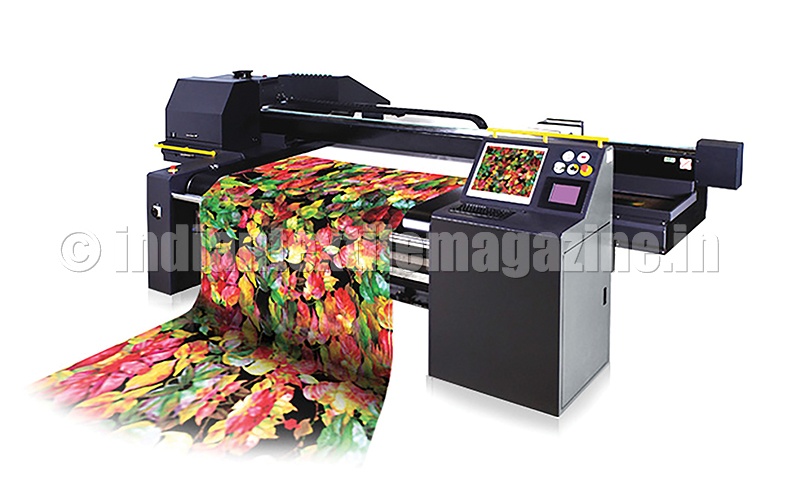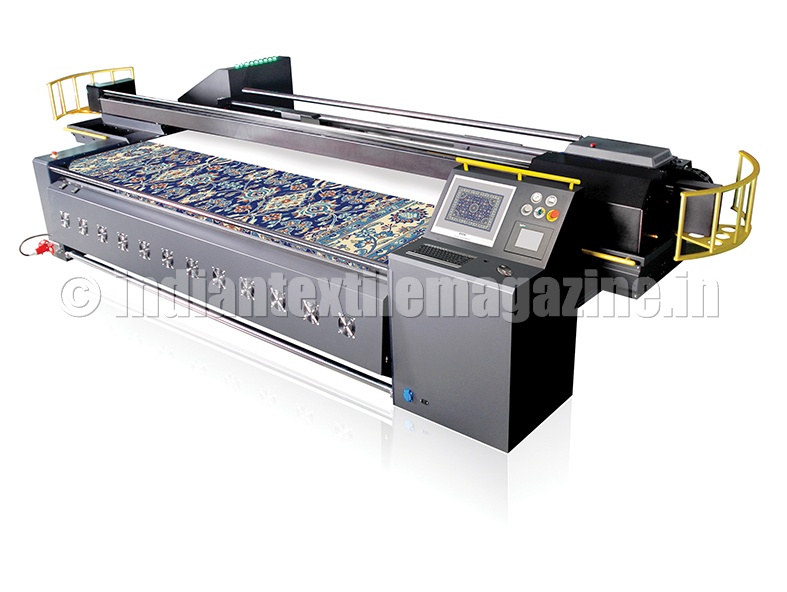With growing problems like high pollution, it is becoming increasingly difficult to find expert technicians who can work in dyeing and printing factories. This necessitated innovative practices to meet the ongoing challenges, including the emergence of digital textile printing (DTP). It has been more a decade since the introduction of DTP which has now been recognized as the most advanced technology for the dyeing and printing industry.

Demand for digital printers has almost doubled since 2001. In recent years, digital textile printing has witnessed accelerated growth across the value chain. DTP now comes all areas like apparel, home textiles, outdoor, automotive interior, industrial applications, handicrafts and other textiles.
Atexco is one of the leading manufacturers of digital textile printing equipment. Located in the software park of the Hi-Tech Zone in Hangzhou, the capital city of Zhejiang province in China. Atexco, part of Hangzhou Honghua Digital Technology Stock Co. Ltd., was the first Chinese company to manufacture textile digital printers. The company’s journey began in 1992, and during Y2K it launched its very first textile digital printer.
In 2007, Atexco launched the high speed VEGA brand. This belt type digital printing machine was technologically so advanced that it was well received by the textile fraternity worldwide. Features like exceptional print speed and excellent quality under traditional printing cost has made industrial digital production a reality.
VEGA’s versatility is reflected in its technology where the height of the printhead can be adjusted to accommodate different fabric thicknesses and usability of different types of inks. These machines are customized to handle a variety of fabrics, right from cotton, linen, silk, wool, nylon and polyester. The latest development in ink products, color management software and substrates has enabled users to produce a wide color range of finer printing quality.
“Atexco has taken huge efforts to imprint a mark in the hearts of customers not only by providing excelling innovative products but by backing them up with excellent aftersales support. Our centralized customer care, team of engineers and well-maintained inventory levels for consumables/spares, with all-India presence, ensures 100% customer satisfaction,” said Mr. Will Qian, Sales Manager – Overseas Market, Atexco, in an interaction with The Textile Magazine.
India has been the main market for Atexco since the very beginning, currently, under such good conditions, Atexco is soon expected to launch more preferential policies in India to stimulate and urge the development of digital textile printing sector. The brand has sold more than 30 machines within a short span of five years, mostly in Surat and Tirupur.
“Well, we were the first company to make digital printer in China, and currently we are the best company in this segment in terms of technology and also quality of our inks,” he added.
Finest quality, established brand and excellent aftersales service are the key USPs for Atexco in India. With three agents in this market, Indian customers can rest assured of guaranteed supply of machines.
At the end of the day, the pros and cons of analogue vs. digital will depend on the requirements of the job at hand. However, digital printing’s unique advantage lies in its turnaround time, flexibility and creative freedom. DTP also represents a revolutionary step forward in terms of environmental friendliness. Compared to traditional printing processes, digital textile printing reduces ink/dye consumption by 20-40 per cent, water usage by 40-60 per cent and energy consumption by 50 per cent.
According to the latest survey, the Asian region accounts for only 30 per cent of the global digital textile printing market, with Europe garnering the largest market share of 45 per cent and the Americas accounting for almost 20 per cent. With the Asian market now supplying over 60 per cent of the traditional textile printing market, there are considerable opportunities for growth of digital-textile-printing, particularly in Indian and Chinese markets.

